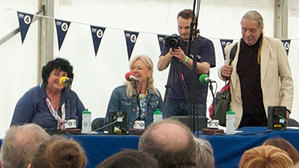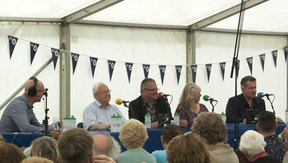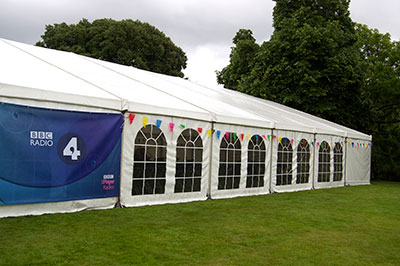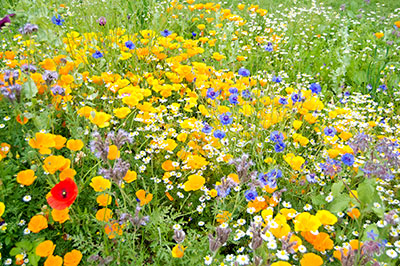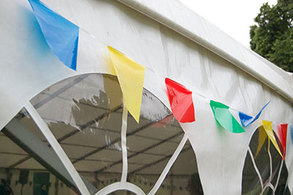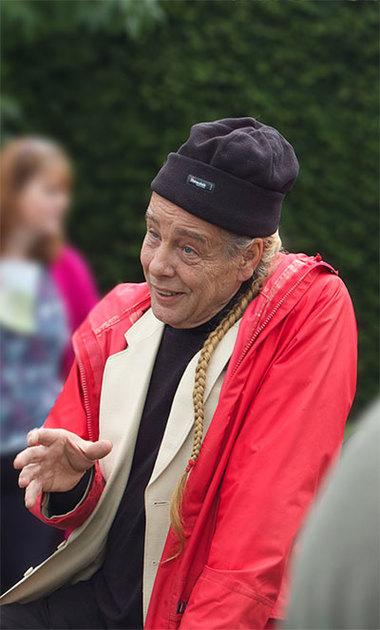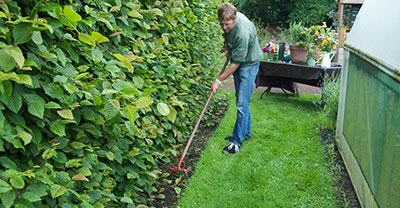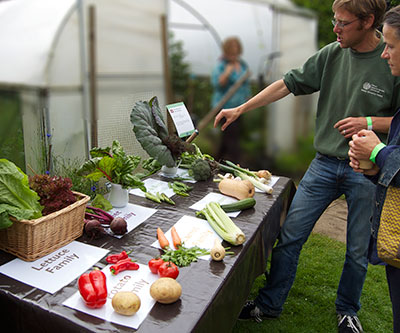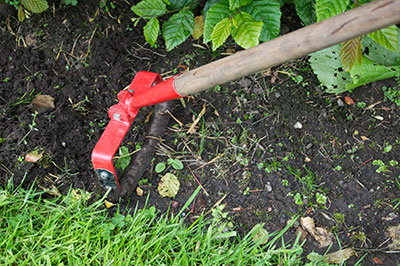Roving Reports
Gardeners' Question Time Summer Party – Royal Botanic Garden Edinburgh, 9 July 2016
The Gardeners' Question Time panels discuss subjects ranging from bottle gardens to flatworms
The BBC's Gardeners' Question Time (GQT) recorded at Edinburgh's botanic gardens on 9 July 2016 was broadcast over two episodes. You can listen to them here now: GQT Edinburgh 1 and GQT Edinburgh 2.
Questions and answers were buzzing around all quarters of the BBC’s GQT party—in the marquees, the potting shed, around the compost heap and in the vegetable plots that now preside over the west side of Edinburgh’s Royal Botanic Garden.
“What to grow in a glass bottle? Forget it, fill it half full of water and put a goldfish in it.” The annual GQT Summer Party was in Scotland for the first time and attracted the biggest audience ever for a single recording. Over 700 loyal listeners packed the tent to capacity, for the morning session, to hear Bunny Guinness, Pippa Greenwood and Bob Flowerdew choreograph an hour’s worth of gardening fact as fun. The afternoon drew a smaller crowd but delivered an equally entertaining second programme. The panel this time, Beechgrove Garden stalwart Jim McCall, Anne Swithinbank, Matthew Wilson and Matthew Biggs were as witty and wise as the first lot. Something about being under canvas on a warm, muggy day in one in one of the most growing-centric locations in the country, made this worth giving up the day spent on the plot. The oldest running radio programme in the world (there was a suggestion there might be a rival on this, but it was quickly batted aside for not being a proper programme), 70 next year, GQT still cuts it as a relaxed and informed favourite of the airways. Questions ranged from what to do with kale that’s failing (a question from Warriston)—soil could be too acid, composting material not properly broken down—stick with it and mulch up with rotted down material and check the PH of the soil for future plantings. What should you put in a windowless bathroom? LED lighting, but not much else. How do you deal with the worm-eating flatworm? (Warriston website pest of the month July 2016)—build a stack of plates somewhere shady to attract them for disposal and encourage ground beetles which are thought to munch on their eggs (further research is being carried out on this subject). Hear these and more questions answered on the broadcast dates above. |
The Sideshows
As well as the main BBC broadcasting events the party laid on information about bees, bread, brewing, botanical illustration, begonias, as well as advice on pests and organic growing from the GQT experts alongside RBGE staff. Check out the RGBE website for information on its continuing programme of events, classes and workshops of all things horticulture related.
|
RGBE experts were on hand in their spacious community-friendly area of the gardens to give advice. Even if you’ve been on the plot for years there’s always something new to discover. Ben Dell, an EGP advisor, swears by his oscillating hoe, a tool he uses for about 20 minutes a week to clear all his allotment paths of weeds. ‘It changed my life quickly and it really works’, he says demonstrating the easy way it cuts and lifts the weeds. Once hoed off, rather than gather them, he leaves the weeds to rot down in situ. Even if the remains re-root, the hoe, if used regularly, will easily rid your paths and beds of even the most stubborn plants.
He also suggests that plotholders can do a lot to discourage slugs and other pests by having as little rubble and rubbish onsite as possible. Bricks, wood piles, slates and other items stored for ‘another day’ all attract slugs particularly. A tidy plot is easier to keep organic and the wildlife more self-regulating. Even raised beds, which he’s not entirely against, attract insects who love the damp dark between earth and boards. He prefers a plot with earthen paths which are both flexible and clean. |
Ben Dell, Edible Gardening Project (EGP) Advisor, shares gardening strategies and demonstrates the efficiency of an oscillating hoe


